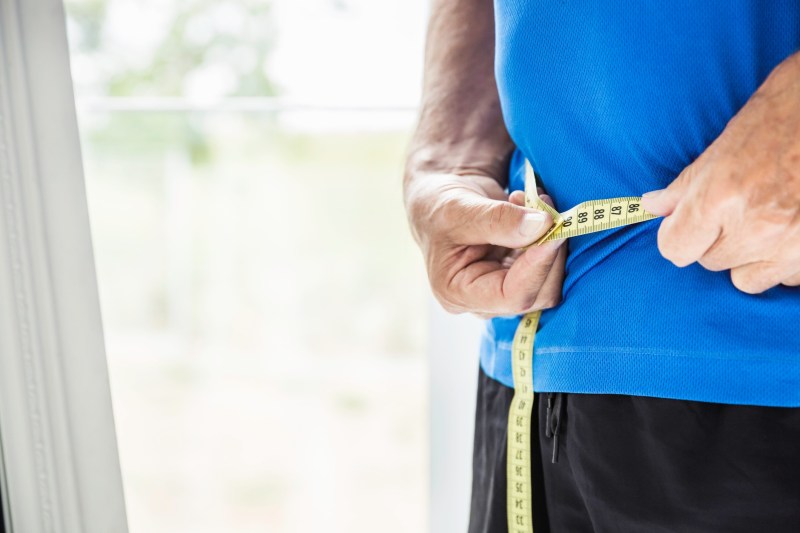Weight loss may be easier than you think. Many diets promise quick weight loss, but CICO is the simplest, most effective approach to losing weight for many people — at least, that’s what the concept’s proponents claim. Let’s do a deep dive and find out if their claims are true.
What does CICO stand for?

CICO stands for “Calories In, Calories Out.” Built on the basic principles of energy balance, CICO refers to the idea that weight management is primarily influenced by the balance between the calories you consume (calories in) and the calories your body uses (calories out).
If you consume more calories than you burn, you gain weight; if you burn more calories than you consume, you lose weight.
What does the CICO diet involve?

The CICO diet doesn’t prescribe specific foods or meals; instead, it focuses on tracking calorie intake and ensuring it’s lower than the calories burned throughout the day. The first thing you must do is determine your maintenance calories — the calories you need to maintain your current weight. You can do this using a calorie calculator.
After that, you can now adjust and track your calories based on your goals, whether it’s weight gain or weight loss. If the goal is weight gain, you must eat more calories than your maintenance (calorie surplus). And if the goal is weight loss, you must eat fewer calories than your maintenance (calorie deficit).
CICO does not restrict specific food or food groups as long as the total calorie intake aligns with your goals. You can eat whatever you want, given you stay within your calorie limits.
Are calories from whole foods and processed foods the same?

While a calorie is technically a measure of energy, not all calories are created equal in terms of how your body processes them.
Whole foods, such as fruits, vegetables, and lean proteins, are generally more nutrient-dense, keeping you fuller for longer. They provide vitamins, minerals, and other beneficial compounds.
Processed foods, on the other hand, may pack the same number of calories but often lack fiber, vitamins, and other essential nutrients, making them less satisfying and potentially leading to overeating. Additionally, processed foods can spike blood sugar levels, causing fluctuations in energy and hunger.
Whole foods that contain protein also improve your metabolism, as you burn more calories digesting them. This additional calorie expenditure could lead to additional weight loss. Conversely, processed food is digested more quickly, resulting in less energy expenditure and making weight loss more difficult.
Again, long-term consumption of ultra-processed foods, especially those high in trans fats, refined sugar, and preservatives, can increase the risk of chronic health issues like cardiovascular and gastrointestinal disease, whereas whole foods tend to support better overall health. This is simply because whole foods provide your body with better nutrients.
What are the benefits of CICO?

Flexibility
One of the biggest advantages of the CICO diet is its adaptability. Unlike other diets that ban certain foods or require strict adherence to meal plans, CICO allows you to eat whatever you like as long as you maintain a calorie deficit. This flexibility makes it easier to stick with it long-term and integrate it into your lifestyle.
Clear focus on scientific principles
At its core, CICO is grounded in basic scientific principles of thermodynamics. If you consume fewer calories than your body burns, you will lose weight, and if you consume more, you will gain weight. It is a proven and effective method for weight control.
Encouraged physical activity
The “calories out” side of the CICO equation includes physical activity. Hence, CICO encourages movement and exercise as a way to increase calorie expenditure, making it a healthy approach that supports an active lifestyle.
Does the CICO method actually help with weight loss?

Numerous studies confirm that maintaining a calorie deficit leads to weight loss, so CICO is effective. However, the quality of the calories you consume can impact how sustainable and healthy your weight loss journey will be. While CICO alone can lead to results, pairing it with nutrient-dense foods will enhance overall health, energy levels, and well-being.
Are there any downsides to following the CICO diet?

CICO doesn’t look at a lot of other factors that can affect weight loss. It emphasizes quantity of food over quality, neglects macronutrient balance, does not address how food affects hormones, and may promote unhealthy eating patterns.
The good news is that you can circumvent these pitfalls. The first thing you need to do is eat whole foods because they are more nutritious, and they will make a prolonged calorie deficit sustainable.
You also need to eat enough protein so that you can maintain muscle mass. The National Academy of Sports Medicine suggests 0.73 to 1 gram of protein per pound of body weight. Protein is also the most satiating macronutrient, so a high-protein diet makes a calorie deficit easier.
To add, you should eat enough fiber, stay hydrated, sleep well, and maintain a good workout schedule. All these will make a CICO more sustainable and help you reach your weight loss goals.
Frequently asked questions

How many calories are in each macronutrient?
Carbohydrates and protein each provide four calories per gram, while fat offers nine calories per gram.
What is a calorie?
A calorie is a unit of energy. Calories in food refer to the amount of energy the body can derive from food consumed. This energy is used for everything from breathing and digestion to physical activity.
What foods are the most filling?
Foods high in protein and fiber tend to be the most filling. Lean meats, fish, legumes, fruits, and vegetables are great options because they provide sustained energy while keeping hunger at bay. Whole grains like oats and brown rice also promote satiety because the body digests them slowly.




